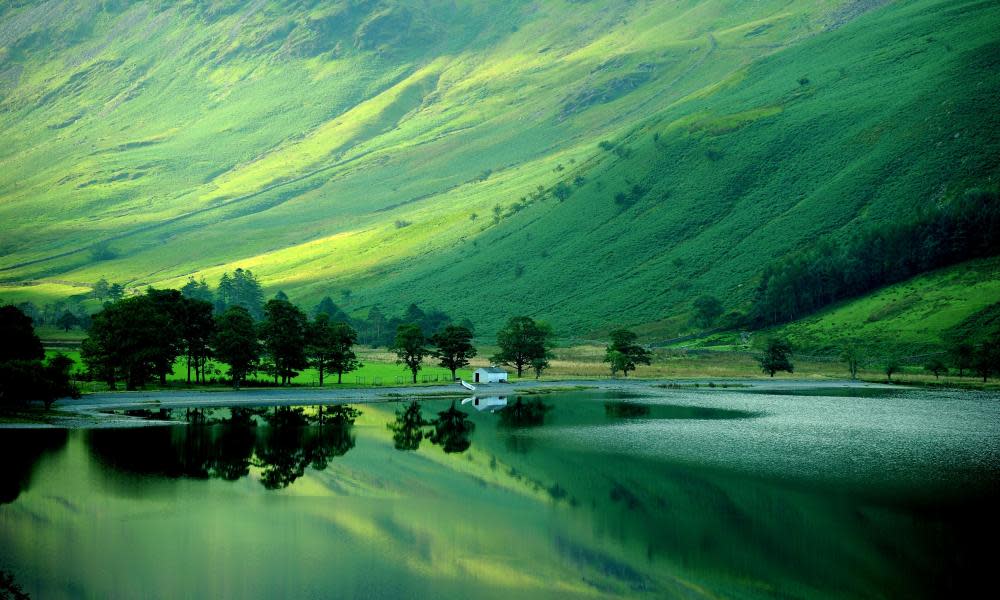Why is Britain so cavalier with its glorious world heritage?

When, last July, Unesco added the Lake District to its list of world heritage sites, the awarding committee noted its contribution to conservation itself. Being admired for so long, the place had “inspired an awareness of the importance of beautiful landscapes and triggered early efforts to preserve them”.
Still, as fairground enthusiasts have long been aware, the place is far from perfect. Where, in what Unesco described as a “harmonious landscape in which the mountains are mirrored in the lakes”, is the opportunity to put on a harness and descend, screaming, over one of those lakes, at a speed of 50mph?
Two centuries since Wordsworth put it on the map, the Lake District can offer barely any zip wire experiences – and they’re not even over water. For all the scenery that helped nurture, Unesco says, an appreciation of “emotional response by people to their landscapes”, not one of the area’s lakes or literary destinations offers anything that could reasonably be described as a destination activity hub.
A Mr Mike Turner of Treetop Trek – and of Cumbria Tourism’s executive board – plans to make good nature’s omission. Undeterred by the advice on managing tourism that accompanied world heritage status, he had, within weeks of Unesco’s announcement, applied to build a network of zip wires over Thirlmere. His hub also features an 11-mile (18km) cycleway, with the travel, parking and lavatory facilities you’d expect for an attraction designed to bring in 127,000 extra visitors a year.
Having balanced the potential contributions of Treetop Trek against permanent damage to an area that, since it enjoys the most protected status possible in Britain, also creates a significant precedent, Cumbria Tourism approved Turner’s plan. Ignoring sustained protests, local and national, the board felt a zip wire network complemented its ambition to make the lakes the “UK’s adventure capital”. ( Turner had to leave the room, it is stressed, whenever his hub was discussed.)
For his critics – and by implication, for Unesco – the head of Treetop Trek has this warning: “The Lake District is not just for mountain climbers and fell walkers. It is for everyone. It shouldn’t be preserved in aspic.”
Stonehenge is 'a major bottleneck and barrier to unlocking the economic potential of the region'
John Glen
To be fair to the Lake District’s zip wire investors, this complete disregard for Unesco’s views, much as it alarms conservationists, has eminent sympathisers; some, such as the National Trust and English Heritage, unlikely; others: Chris Grayling. In fact, it would be quite wrong to be misled, by the regular appearance of Theresa May’s walking poles, or by her party’s name, into thinking that her generation of Conservatives takes any active interest in conservation, particularly when it threatens commercial interests. Her government has done nothing, for example, to intervene against the destruction that is planned for Liverpool’s waterfront, a world heritage site.
Since 2012, Liverpool has featured, for its scheduled vandalism, on Unesco’s list of endangered sites, a distinction it shares with, among others, Timbuktu, Aleppo and Sana’a. The mayor, Joe Anderson, has said people don’t come to see a Unesco certificate or a city preserved – wait for it – “in aspic”.
If, similarly, Cumbria’s tourism board couldn’t give a monkey’s for the area’s Unesco world heritage status, then that only mirrors Grayling’s indifference, as transport secretary, to Unesco’s disapproval for his plans for Stonehenge, probably the country’s best-known world heritage site. Following a few tweaks to a tunnel scheme that originally featured a vast portal aligned with the midwinter solstice, the government will be ignoring Unesco’s argument against the tunnel: that too much open, four-lane road remains on the world heritage site and only a bypass can properly protect it.
On the contrary, said Grayling and the previous culture minister (equipped as is now the convention in that job, with no obvious interest in culture), this internationally significant archaeological sacrifice would be a tremendous gain for British roads and, thereby, tourism. For John Glen, Stonehenge was “a major bottleneck and barrier to unlocking the economic potential of the region”.
Where the Conservatives’ expert-defying philistinism, against advice from unelected supranational busybodies, could be seen as just a further expression of jingoistic self-harm, the support from bodies with, nominally, longer-term cultural responsibilities is less easily understood. Why would English Heritage, custodian of ancient monuments, endorse a Stonehenge scheme that specialists have damned as destructive both to that ancient monument and to the UK’s “international reputation for the quality of its heritage protection”?
Perhaps, as people living in Cornwall might point out, it’s what we should expect from a heritage body that now “reimagines” Tintagel with a rock carving of a sleeping face of Merlin, reminiscent, in style, of the chainsawed wooden sculptures you occasionally see in laybys. Nor can its addition to that property, following objections to Merlin, of an 8ft metal knight (a resin miniature is available in the gift shop) have done much for the UK’s reputation for heritage protection.
Dismayingly, for anyone praying that Tintagel is an Arthurian one-off, and Stonehenge a similarly rare capitulation, its latest assault on ancient property – a scheme to hack a visitor centre into the base of the historic earthwork at Clifford’s Tower, in York – further confirms the need for vigilance, not just in protecting vulnerable sites from Grayling, zip wires and mass tourism, but from English Heritage. When campaigners won a further appeal, EH’s response left the 12th century in no doubt about unforgivable design flaws. “We remain convinced,” it said, “that a visit to Clifford’s Tower falls far short of what this important site deserves.”
But Clifford’s Tower should probably think itself lucky if it escapes, in the course of the reimagining process, without a sleeping face of Chris Grayling carved into a lintel. As the UK breaks away from Unesco’s constraining principles, any excrescence seems possible.

 Yahoo News
Yahoo News 
